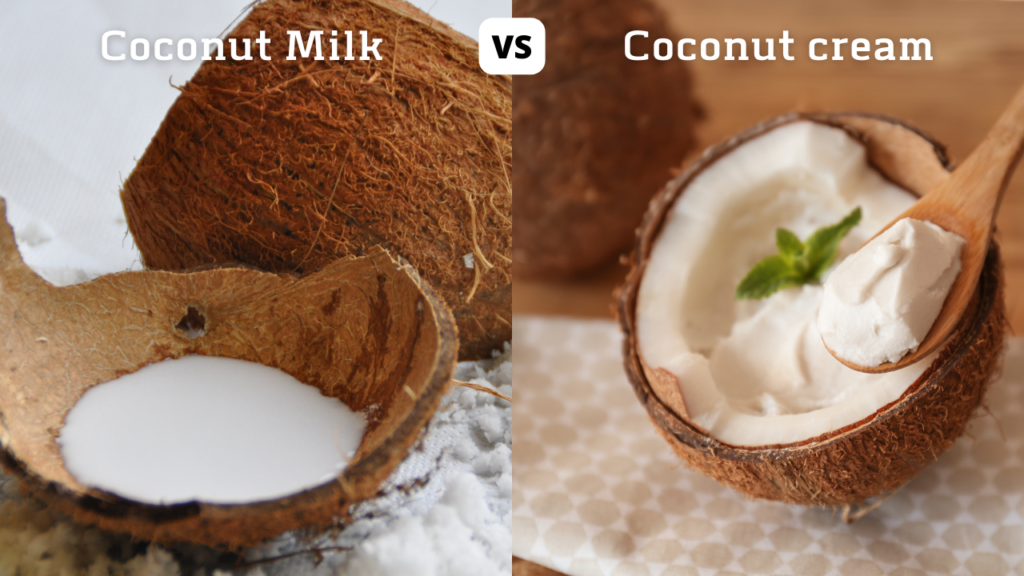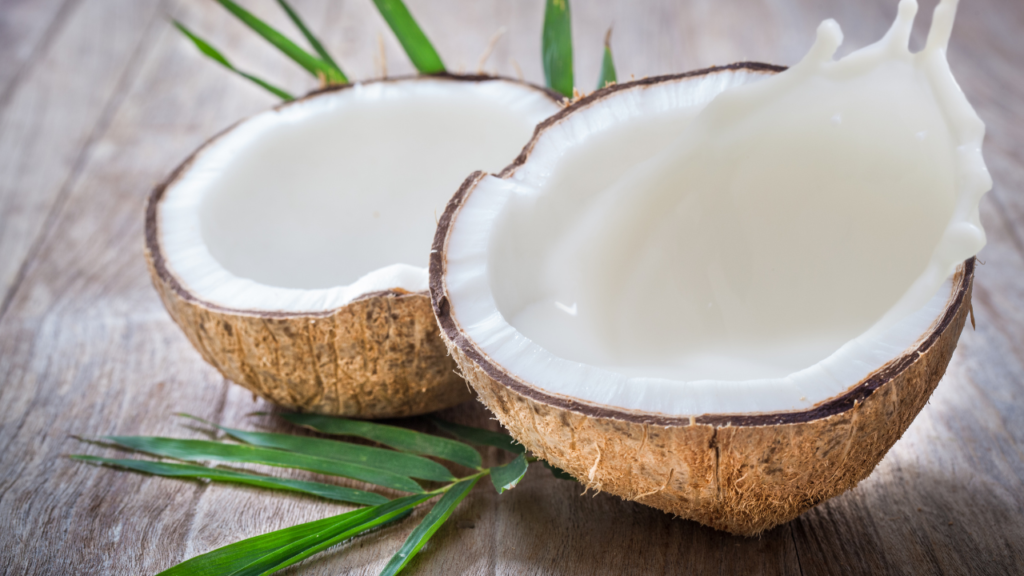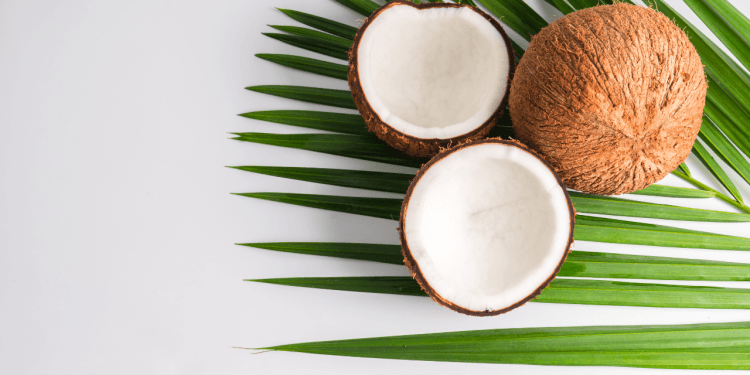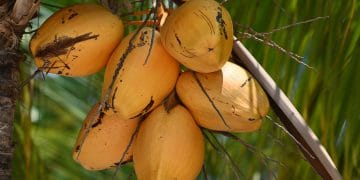What’s the difference between coconut milk vs coconut cream? When choosing a type of coconut milk, it’s important to know what you want the finished product to be like. You are not alone if you have ever been confused by the variety of coconut products available at the supermarket and wondered what the difference was between coconut milk and coconut cream.
Today, consumers may choose from a wide array of brands and styles, including traditional, basic, and lightweight options. In large part, this is attributable to the rise in popularity of coconut milk and coconut cream as cooking ingredients. Both are excellent dairy-free substitutes for milk in a wide range of dishes, from desserts to curries to soups to whipped cream.

Coconut milk vs coconut cream for curry
Both coconut milk and coconut cream start with identical coconuts, but there is a key difference between the two. Once you have this information, you may substitute coconut cream for coconut milk in any recipe calling for either (and vice versa). Get down to business, then!
What sets coconut cream different from coconut milk is, in a nutshell, its higher fat content. Coconut flesh and water are the two components used in both. However, coconut cream has more fat and less water. Consequently, the consistency of coconut cream is more substantial. Milk-like in consistency, coconut milk is thinner. So that you may put them all to good use, I’ve outlined their features below.
The Meaning of Coconut Milk

We all know that coconuts can’t be milked. Still, the flesh within a coconut may be processed into milk. Shredded coconut flesh (the white substance you see when you open a coconut) is simply puréed with water to make coconut milk. The final product has a 9-15% fat content and is rich and creamy in texture.
The market is flooded with canned coconut milk in a variety of flavors and textures, from the traditional to the ultra-light. Use organic full-fat or “traditional” coconut milk with few or no additives for cooking. Avoid worrying about using “lite” coconut milk. Simply put, it’s diluted coconut milk.
Why do people use Coconut Cream?
Coconut cream, like coconut milk, is made by blending together puréed coconut flesh and water, but there is just enough water in it to make it spreadable. When compared to coconut milk, coconut cream is substantially thicker. Because it preserves all the richness and taste of coconut milk while excluding part of the water, it may be thought of as a concentrated form of coconut milk. As a result, coconut cream has a greater fat level, often between 19 and 22 percent.
When regular coconut milk won’t do, may coconut cream be used instead?
Indeed, we can! Additionally, coconut milk may be used in place of coconut cream. Let me show you the ropes. In place of regular coconut milk, use coconut cream instead. It is possible to manufacture coconut milk from coconut cream by diluting it with water since coconut cream is just coconut milk with less water. To produce 3/4 cup of coconut milk, combine 1/4 cup coconut cream with 1/2 cup warm water. If your coconut cream is thicker than usual (some types have a greater fat content), add water gradually while blending until you get a creamy consistency.
Creamy and delicious, coconut milk comes from the meat of mature coconuts. It’s loaded with calories and fat. Coconut milk has long been a staple in the cooking of Southeast Asia, East Africa, and the Latin American and Caribbean regions. When using coconut milk in place of coconut cream: Store one full can of coconut milk in the fridge overnight. There will be a separation between the coconut solids and the water in the can. Using coconut cream is as simple as opening a can and removing the solidified coconut fat that has risen to the top. For reference, one can of coconut milk yields anywhere from a quarter cup of solid coconut cream to a whole cup of cream, depending on the brand.
Coconut milk has joined the ranks of other non-dairy milk and is now widely available in cans and cartons. The amount of water present is the primary difference between canned and carton coconut milk. It’s important to note that the cartoned kind of coconut milk is significantly watered down. There are extra chemicals and stabilizers in it to prevent it from separating, and it’s also a lot lighter.
The conventional form of coconut milk is the canned kind. Due to its increased fat content and creamier consistency, this food is best kept in a can. You can’t make coconut cream from cartoned coconut milk since it won’t thicken when chilled. Cooking with coconut milk is a terrific alternative to using conventional milk. Smooth, creamy, and drinkable results are guaranteed. Blend it into soups and smoothies, or create your own ice cream with coconut milk. A few tasty applications of coconut milk are as follows:
Incorporating Coconut Cream into Your Diet
When you want something with a thicker, creamier consistency, coconut cream is the way to go. My favorite way to enjoy coconut cream is in the form of coconut whipped cream. Top fruit with it, or use it in place of milk in your morning cup of coffee or matcha. It may also be used to thicken and cream up liquids like smoothies, curries, and soups. Thicker than regular cream, coconut cream is a byproduct of coconut milk. It is common practice to cool coconut milk and then remove the floating cream before serving. It’s quite dense, and it tastes like coconut but isn’t sweetened (unlike coconut cream). It’s often canned with coconut milk. It’s possible you purchased it believing it was coconut milk by mistake.
Trying to find a substitute for a cream that doesn’t include the milk? Then coconut cream is the thing you need. Coconut whipped cream may be made using a hand mixer or a stand mixer, coconut milk, a sweetener (I use honey or maple syrup), and vanilla extract. It also works well as a thickener in soups and sauces, and it tastes fantastic when used to make sweets like ice cream from coconut milk or cake and pancakes from coconut flour. Replace dairy milk in smoothies with coconut cream or coconut milk.
Conclusion
When making a simple syrup, a cream of coconut uses coconut milk in place of water. The flavor is fantastic in tropical cocktails and works well in other drinks as well. Cream of coconut is easy to create with only a can of coconut milk and some sugar. Coconut cream and coconut milk are two different products. In non-dairy cooking and baking, knowing the distinction between coconut milk and coconut cream is essential. Here is a complete guide on using coconut products in your cooking, including coconut milk, coconut cream, coconut water, and cream of coconut.














